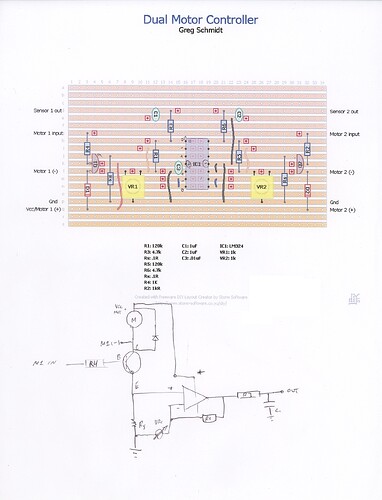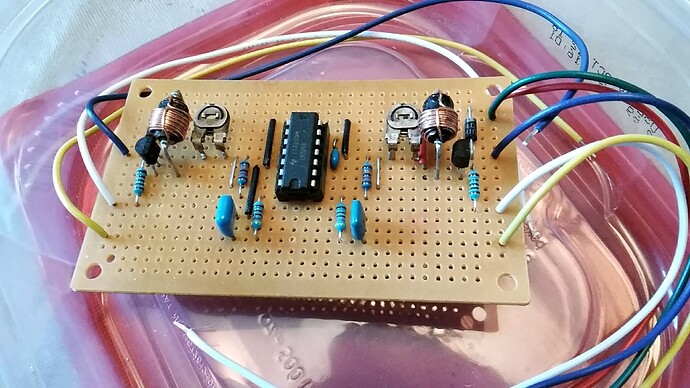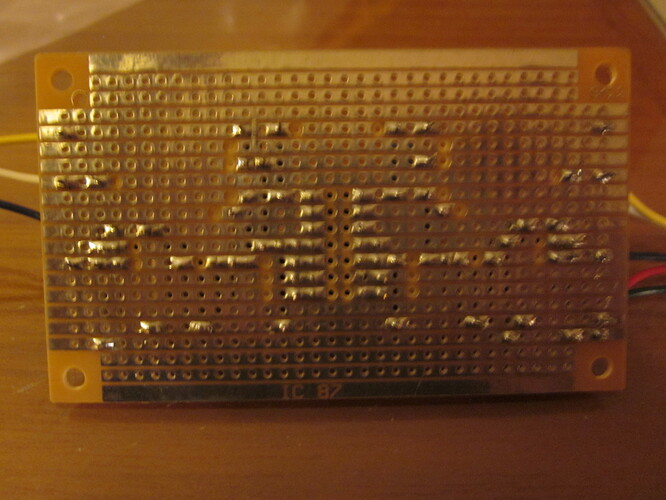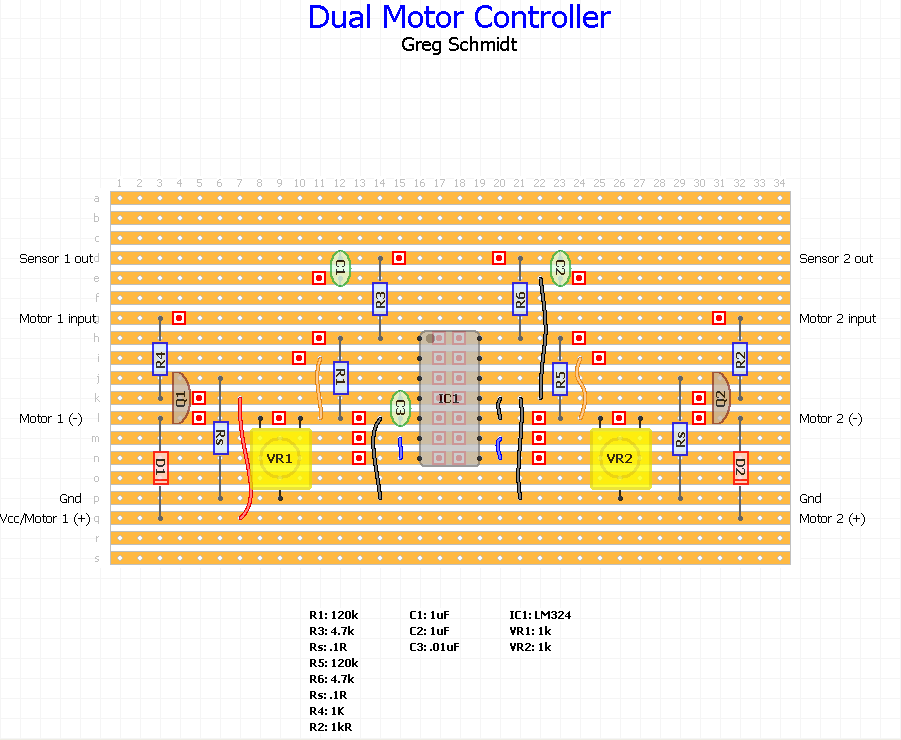With the sprint coming to a close, here is my report: “Smaller is better.” I had taken the advice of someone early on when I picked the motor and never really questioned it. The suggestion of the GPN motors was a good one, and they have performed perfectly…which is probably why I never thought about changing it. But now that I’ve tried some other options, I can see now that we don’t need nearly that much power.
The design sprint, for me, was basically just ordering a bunch of motors and trying them out. I wanted to observe what kind of motors worked best, with different connections to the drive shaft, and to try out some alternative setups. Here is a summary of what I tried:
Permanent magnet motors
These are extremely powerful for their size. They can be found by searching for “scooter motors” and were a suggestion by a forums contributor (@milesjules) . At around $50-$60 they are a drop-in replacement for the GPN motors if you go with 150W or more. With a timing pulley, you can use smaller wattage motors too.
12/24V 150W High Speed CW/CCW Permanent Magnet DC Motor for DIY Generator(3000RPM(12V))
Walfront 12V/24V DC Motor 36W Large Torque Brushed Motor CW/CCW with Flange Wire(DC 12V 2000RPM)
YaeTek 36W Permanent Magnet DC Motor 2000-4000RPM High Speed Large Torque Motor 12V/24V (24v 2000rpm without flange)
HiGear 150W Watt 24V Volt DC Brush Electric Motor #25 Chain 11T Sprocket Unite ZY6812 f Razor Scooter DIY Kids Kart 150-GM150115 Works with 24V by Alfa Wheels (150W 11T Sprocket)
Yaegoo 150W 24V DC Electric Motor Brushed Motor Fit Electric Scooter Mini Bike, Go-kart, Bicycle or DIY Experiment from early research I did on how reel-to-reel tape machines work.
Of the above, none are a bad choice. But given the size and weight of some I ended up liking the YaeTek 36W motor. I ran it at 12V with the slip-drive system described below and got good results so I have ordered the 12V version to try with a less hacked-together test in the coming week.
Worm Gear drivetrain
Worm gears offer a torque boost and would allow the use of a much smaller motor, thereby reducing cost and shipping weight. While this did work, I found that it really wasn’t necessary given the success fo the pulley drive (see below). I did, however, like the way it worked and think it will make a good option for the capstan drive system.
Worm gear set from ServoCity
Motor tested with worm gear
Pulley System + Slip Drive
This proved to be the most valuable discovery of the sprint. Firstly, I found that using the timing belt-pulley system offered more torque than a direct drive (hooray for physics). This allows for a smaller motor.
Secondly, it seems an advantage to use a pulley system as it effectively (and literally) decouples the motor from the drive shaft and allows for different motors to be exchanged easily if the user chooses to do so.
The slip drive system came as an idea both from a forums contributer (@ednisley) and from research I did a couple of years ago on how reel-to-reel tape machines work. The video link shows it pretty well - it pulls when you need it to and slips when you don’t. The slip wheel was 3D printed and the surface area and material of the timing belt I had worked great with the plastic of the wheel to provide both grip and slip.
The advantage here is not only can we get away with a smaller motor, but we might also be able to get rid of the whole tension feedback loop/measurement system. NOW HOLD ON, I know what you’re thinking…“why would you want to get rid of measurement?!” Read on.
Conclusion and next steps
The sprint revealed that a) we don’t need big expensive motors to drive a full reel of 35mm film (our heaviest possible load), and that b) we might not need a feedback loop to measure tension.
In order to get a clearer picture of exactly what motor and what drive system will be best, more tests should be done and I’ve already ordered everything I need to do those tests. So stay tuned for more. As soon as I’ve decided on a setup for v2 Kinograph, I’ll post an announcement here and the results in the wiki.
More on removing the tension measurement feedback loop (aka the PID loop)
I haven’t decided anything yet, so don’t get too excited. I could use some help thinking this through so please offer your comments in this thread.
Review:
For those unfamiliar, the PID loop used right now is comprised of this hub and a PID algorithm that tries to keep the hub at a target angle at all times. This means that you should have steady tension at all times as the motor speeds up or slows down to maintain that angle at the hub.
Advantages of PID loops:
As I just mentioned, you get constant tension.
You can adjust the tension by changing a single value (with a knob, or in software)
Disadvantages of PID loops:
Complexity - we have a whole PCB dedicated to this with its own microcontroller.
PID tuning - because every potentiometer is not exactly the same and every machine will not be mechanically identical to the micrometer, the PID will need to be tuned for every system. While we can certainly make this easier through software or guides, it is still not an exact science and can lead to strange effects that are hard to troubleshoot like this one. To fix that you basically have to go into the code and fiddle with some numbers and keep trying until it works. Not ideal for a non-technical user.
What would life be like without a PID loop?
- we’d probably just have one single PCB shield for the Arduino and all other connections would be simple cables or screw terminals. No more ethernet connections, multiple microcontrollers with their own codebase, etc.
- Tension is still constant, and still adjustable. To adjust, we could implement a simple mechanical solution to increasing tension on the belt pulley (e.g. an idler wheel on an arm). Tighter belt = more tension in the film. Looser = less. Easy peasy.
- less parts, simpler build
Given the above, I think it’s worth trying so I’m going to be focused on building a more complete test with both take-up and supply reels using slip drives and the capstan moving the film. I hope to report back soon!
Comments, thoughts, rants? Let’s hear it, folks!






 ) will ensure that the film is subjected to a mostly constant tension (of course provided that the control mechanism is good enough).
) will ensure that the film is subjected to a mostly constant tension (of course provided that the control mechanism is good enough).